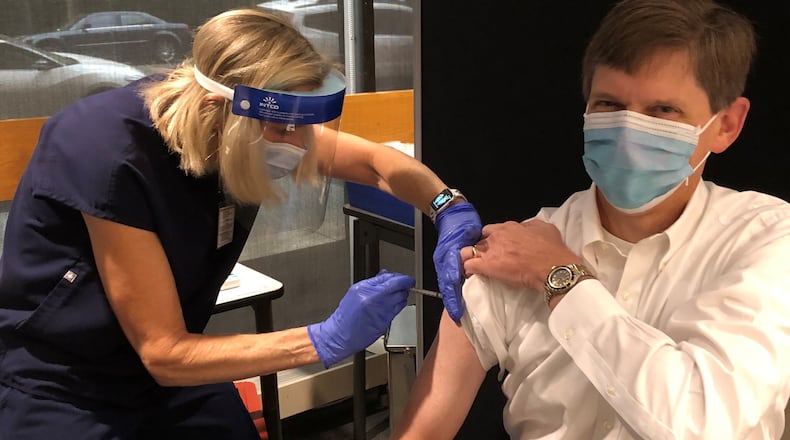My father died of COVID-19 in November of last year, just before the vaccines became available. Mourning his loss while working on the frontlines and helping guide our health systems in a hard-hit state throughout this pandemic has filled me with many different emotions: I have been sad, I have been anxious, I have felt nervous, frustrated and at times defeated. I have been exhausted. But for the first time since the pandemic started, I now am truly scared.
Delta terrifies me. This variant is changing everything, particularly when it comes to children and COVID. I work in Alabama as a pediatric infectious disease specialist, and the picture of COVID-19 in the Southeastern U.S. is bone-chilling. And it is going to get worse, perhaps much worse, before it gets better.
Credit: contributed
Credit: contributed
Between July 29 and Aug. 5, there were 93,824 children and adolescents infected across the U.S. The American Academy of Pediatrics and the Children’s Hospital Association have been tracking the numbers of children infected, hospitalized and killed by COVID-19 since the start of the pandemic, and this is the kind of weekly toll we saw back in January and February of this year – back before many adults were vaccinated. We have gone backwards. And this does not appear to be a blip; the numbers are moving up so abruptly that January and February – when up to 25,000 Americans were dying of COVID every week – may end up looking pretty mild in comparison.
It is even more dire when you look at just my region of the country. In the South, if you were to draw a graph of the increase in COVID cases over the past handful of weeks, it is nearly a vertical line. Case counts are skyrocketing. Vaccination rates are lagging, and the delta variant is surging through our communities. In mid-July in the South, the AAP counted 50,000 cases of COVID among children and adolescents. That’s a 10-fold increase since mid-June.
The hardest hit are the unvaccinated, a group that includes about 50 million children under age 12. As there are more cases among children, more children are suffering the severest forms of the disease, too. According to the Centers for Disease Control and Prevention, during the week ending Aug. 6, on average 216 children were hospitalized with COVID every single day. At the pandemic’s (previous) peak in early January, it was 217. In terms of disease severity in children, we are back in the worst days of the pandemic.
The hospital where I practice in Birmingham, Alabama, is filling up rapidly. We are treating almost twice as many COVID-positive patients as we did at the height of the last surge in January. About a quarter of them are on ventilators or heart-lung bypass (ECMO) machines. I hear similar stories from my colleagues at hospitals across the South, and we’ve all seen the news reports of children with critical, life-threatening illnesses having to seek care in another state because the hospital in their hometown has no space left.
There is a lot about the delta variant that we do not yet know, but what we do know is bad. We know delta is incredibly infectious. A person infected with the delta variant has 1,000 times more of the virus in their nose compared with people infected with the original form of the virus. On a scale of contagiousness, only measles is more infectious. Presumably this is why delta spreads so rapidly, although there may be additional ways that the virus is evolving to spread so much more easily. What that means for its rapid march across the South is part of the story that is not yet written. The data on delta in adults from other countries is disheartening, and suggest that we need to prepare for the increased likelihood of hospitalization and death.
We don’t yet know if that will be true for children, too. Are the increasing numbers of children being hospitalized because this variant is more dangerous to individual children, or is it because the variant is more easily transmitted and so more people are getting sick overall? Either way, we end up in the same place, which is really sick children filling up our hospitals instead of our classrooms.
If that scenario scares you as much as it scares me, I urge you to do what you can, right now. First, if you are 12 years of age or older and not vaccinated, please get the vaccine as soon as possible. It is absolutely the best way to protect yourself, as well as the children in your life, including those who are younger than 12 and not yet eligible for the vaccine.
Second, wear your mask. Evidence has shown masks are effective in preventing outbreaks in schools, hospitals, and other places people gather.
While I am scared, I also feel a lot of hope. We do have some tools we can use right now to protect ourselves and our communities. We just need the will to use them.
David W. Kimberlin, M.D., is professor of pediatrics in the division of pediatric infectious diseases at the University of Alabama at Birmingham.
About the Author
Keep Reading
The Latest
Featured



